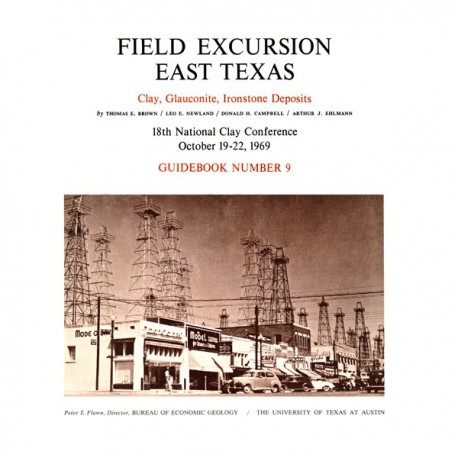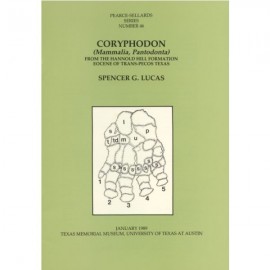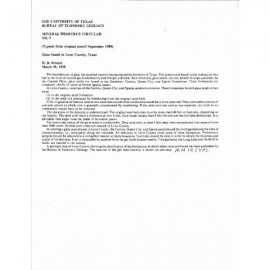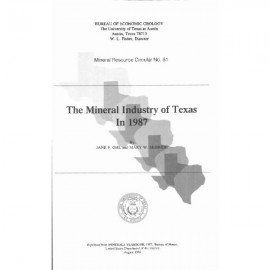Guidebooks
-
Books & Reports
- Reports of Investigations
- Guidebooks
- Udden Series
- Geological Circulars
- Down To Earth
- Atlases of Major Oil and Gas Reservoirs
- Texas Memorial Museum Publications
- Environmental Geologic Atlas of the Texas Coastal Zone
- Mineral Resource Circulars
- Other Reports
- Seminars and Workshops
- Handbooks
- Submerged Lands of Texas
- Symposia
- Annual Reports
- Open File Reports
-
Maps & Cross Sections
- Thematic Maps
- Miscellaneous Maps, Charts & Sections
- Geologic Atlas of Texas
- STATEMAP Project Maps
- Geologic Quadrangle Maps
- Cross Sections
- Highway Geology Map
- Energy and Mineral Resource Maps
- Shoreline Change and Other Posters
- Wilcox Group, East Texas, Geological / Hydrological Folios
- Bouguer Gravity Atlas of Texas
- River Basin Regional Studies
- Featured Maps
- Posters
- Teachers & the Public
-
Geological Society Publications
- Gulf Coast Association of Geological Societies
- Alabama Geological Society
- Austin Geological Society
- Corpus Christi Geological Society
- Houston Geological Society
- Lafayette Geological Society
- Mississippi Geological Society
- New Orleans Geological Society
- South Texas Geological Society
- GCS SEPM Publications
- Historic BEG & UT Series
Field Excursion, East Texas: Clay, Glauconite, Ironstone Deposits
GB0009
Field Excursion, East Texas: Clay, Glauconite, Ironstone Deposits, by T. E. Brown, L. E. Newland, D. H. Campbell, and A. J. Ehlmann. 48 p., 13 figs., 1969. ISSN: 0363-4132. Print
"The field trip as outlined in this Guidebook includes four stops and several prolonged pauses. The objectives of the trip are to acquaint the field trip participants and readers with the glauconite, clay, and ironstone deposits of what may be generally referred to as "central" East Texas. In addition to the aforementioned deposits, a general discussion of soils of this portion of Texas is included in the Guidebook. The area covered by the trip, shown in figure 1, encompasses ten counties and extends from the relatively flat, black prairie area of north-central Texas, to the rolling, forested regions of East Texas. The length of the route is about 370 miles and requires about eleven hours for driving time, field trip stops, breaks, and lunch. The two major structural features over which the route passes are the Tyler Basin (figs. 2 and 3) and the Mexia-Talco Fault Zone (fig. 1).
Locally prominent structural features, such as salt domes and fault systems, are discussed in the road log."
Citation:
Brown, T. E., Newland, L. E., Campbell, D. H., and Ehlmann, A. J., 1969, Field Excursion, East Texas: Clay, Glauconite, Ironstone Deposits: The University of Texas at Austin, Bureau of Economic Geology, Guidebook 9, 48 p.







